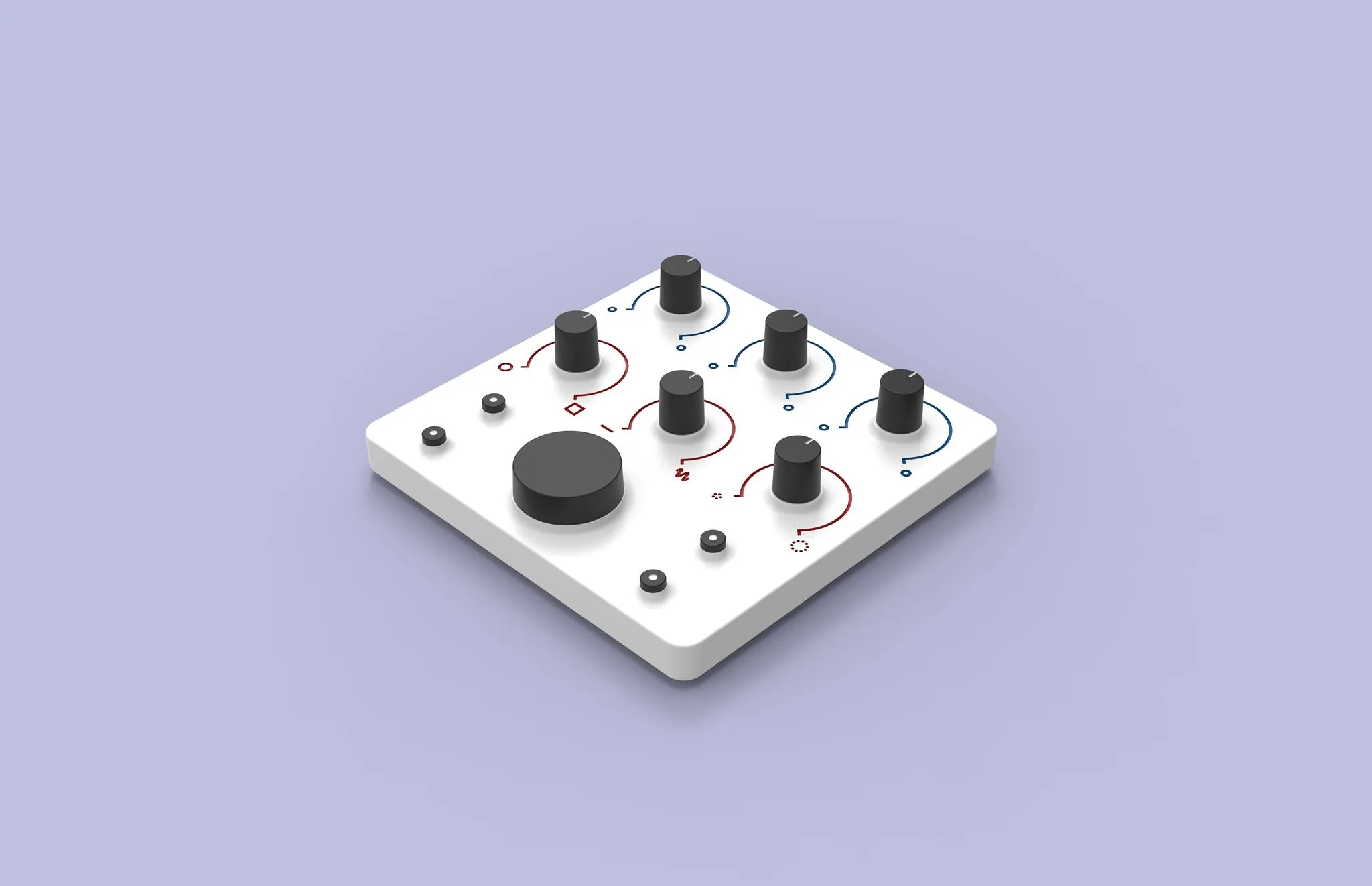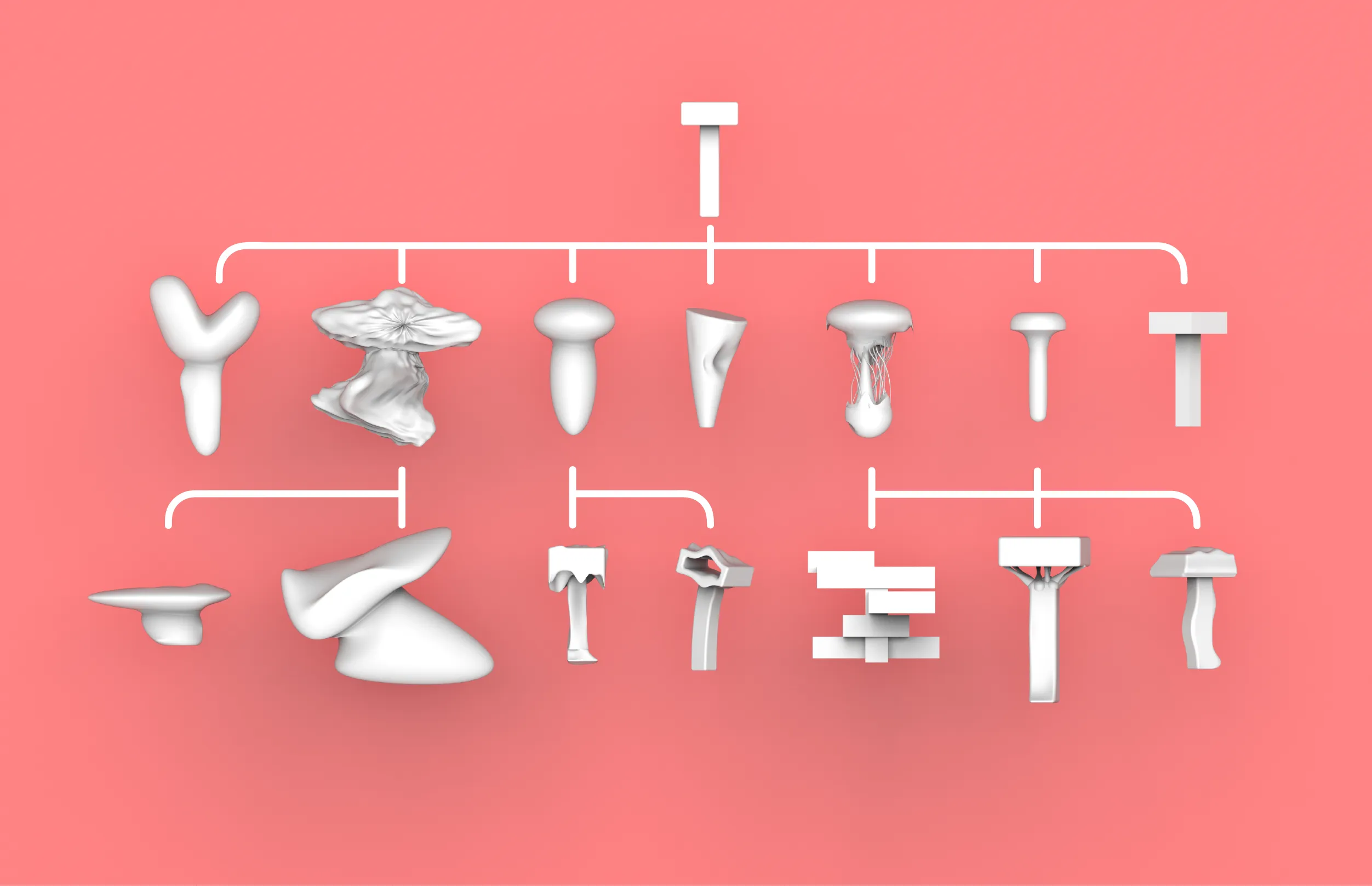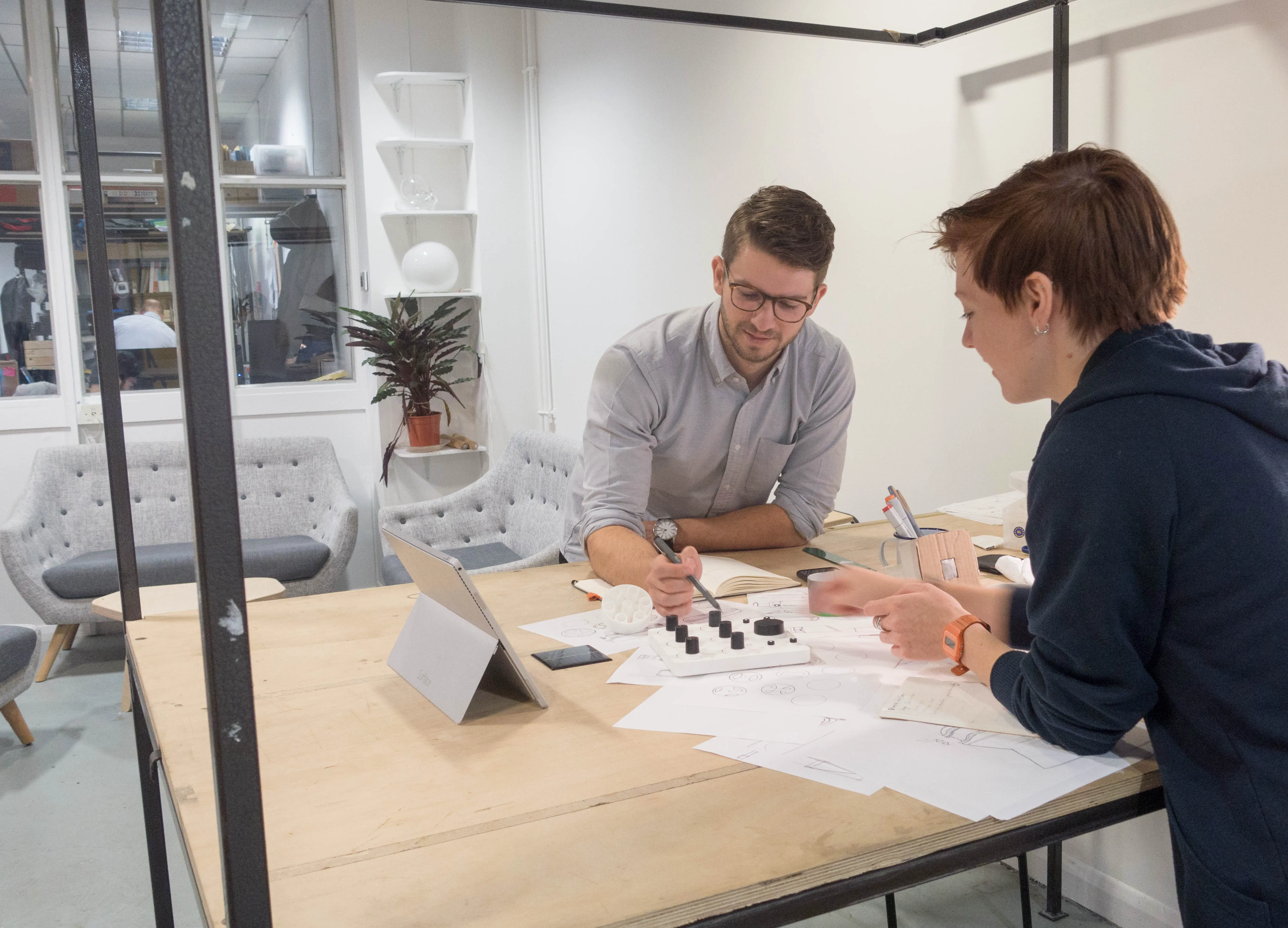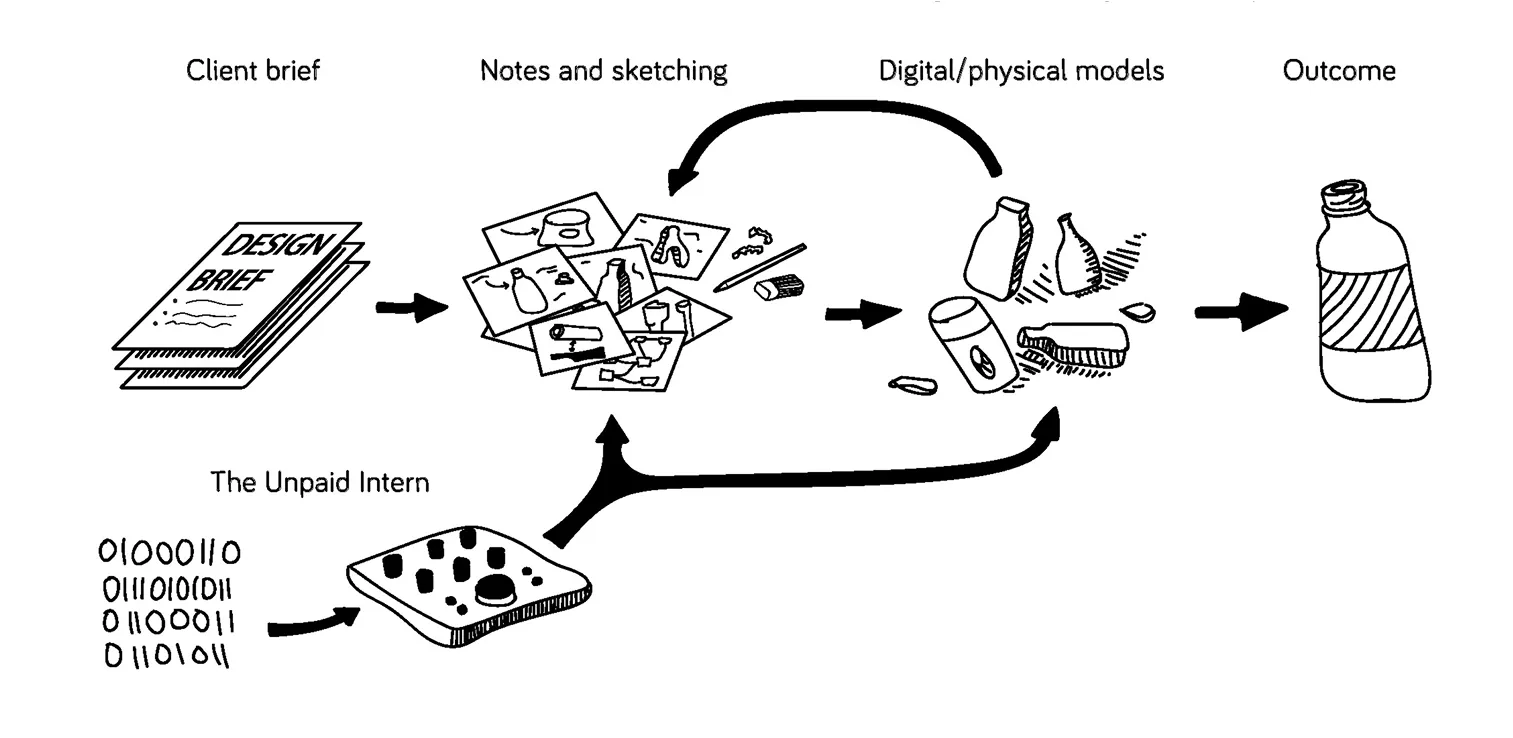The Unpaid Intern - 2015
A synthesiser for the industrial design process
Drop in your CAD files and explore the latent space of your concepts. The controller works as a way for the algorithm to live on the table amongst the sketches and models.
The interface lets you save presets and collaborate naturally, without everyone needing to huddle around a computer. Say your client wants to 'make it more jazzy' - you can quickly explore what details make something feel jazzy. When you find it, you can save that direction as a preset, amplify those characteristics or tone them down, maybe blend in some post-punk influences, let the client use the dials to fade between Miles Davis and Moses Boyd. In this case you're not only exploring you're working on finding a shared language to work in.

In the summer before working on this I had been working as an unpaid1 editorial intern for ICON magazine writing first drafts and exploring topics for the editors. This is kind of the same, it'll take your vague creative direction and returns with countless variations, ready for feedback and refinement.

Or at least that was the concept, the Unpaid Intern was my graduation project at Central Saint Martins in 2015 - and the first sign that I should move from industrial design to interaction design. I had these ideas about generative tools and AI augmentation2, I barely knew how to prototype them - software and electronics were all peripheral to what I had been focussed on. But teaching myself to prototype them set me down the path I'm on today.

The project took on a life of its own after graduation, becoming part of the Vitra Design Museum's 'Hello Robot' exhibition on the past present and future of our relationship with robots. It ended up travelling around the world from 2017 until 2023. And it was fun to see it be part of that larger conversation about how we relate to AI, especially as the hype started growing.

- In all fairness they did pay for my zone 5 travelcard.
- There was AI in the air at Kings Cross back then, Deepmind was the first of the Google companies to move in to that campus, and they were hard at work prepping for the Lee Sedol match the following spring. I hand-made an invite to our degree show and to try get Demis to come to my degree show.



